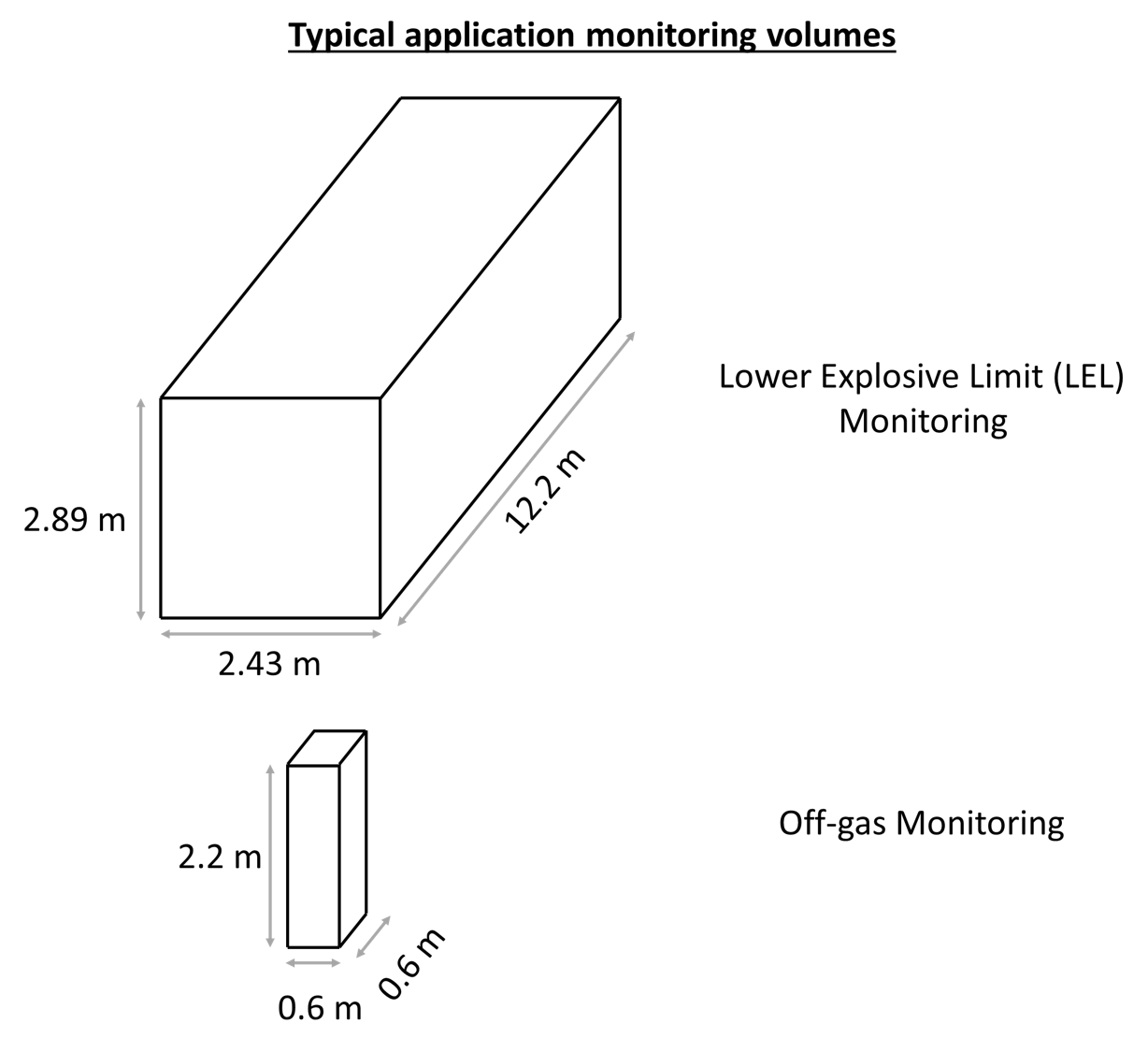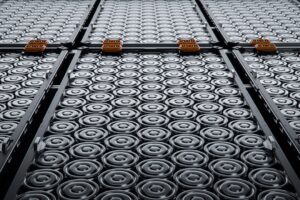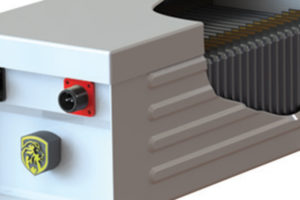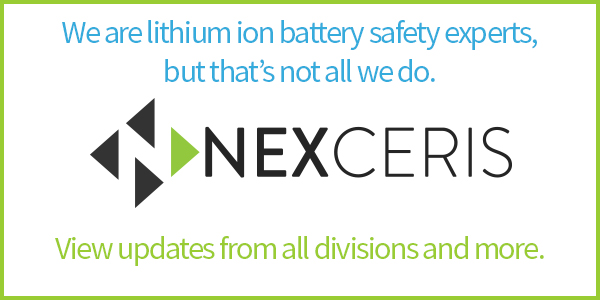Lithium ion batteries are an essential part of modern day electronics, but with prices dropping and supplies increasing, li-ion batteries have become a viable option for large-scale applications. Grid storage solutions, electric boats, backup power systems, and many other applications are integrating large format lithium ion batteries. These battery systems often consist of hundreds or thousands of individual lithium ion battery cells.
Grid storage solutions, electric boats, backup power systems, and many other applications are integrating large format lithium ion batteries.
Putting this many batteries in one place also has safety implications, especially in locations where real estate is at a premium. Large format lithium ion battery failures in densely populated areas could have very serious consequences. That is why these battery installations are very well regulated, monitored, and lithium ion battery safety is a top priority.
Large format lithium ion battery failures in densely populated areas could have very serious consequences.
Among these monitoring technologies required by regulation is a lower explosive limit (LEL) monitor (see rule 608.5.3 of the International Fire Code), which indicates when there is an accumulation of flammable gases. There are various thresholds, but typically the monitor will alarm when the compound of interest reaches 25% of the LEL (typically 0.5 – 4% gas by volume).
Li-ion Tamer® offers a lithium ion battery off-gas monitor, which is a monitoring solution designed specifically for lithium ion batteries. In our solution, we deliver the earliest warning of lithium ion battery failures by diagnosing the first stage of a battery event after the initial abuse (stages of a lithium ion battery failure), which is typically an off-gassing event in the ppm-level concentration range.

Through years of R&D, we have developed an economic solution that is maintenance free which was designed to be seamlessly integrated into lithium ion battery systems. The most critical accomplishments in our product development efforts include the development of a product that is inexpensive and scalable and an algorithm that creates calibration-free off-gas monitoring.
The most critical accomplishments in our product development efforts include the development of a product that is inexpensive and scalable and an algorithm that creates calibration-free off-gas monitoring.
By focusing our efforts to develop an economic off-gas monitor, we are able to deliver localized lithium ion battery safety solutions. Localization provides the capability to deliver information on precisely where the battery event is taking place and when. There is no need for off-gas accumulation; instead, we provide a near-immediate response time to these events (< 2 seconds). See the figure to the right to understand a typical monitoring volume by LEL monitors and off-gas monitors.
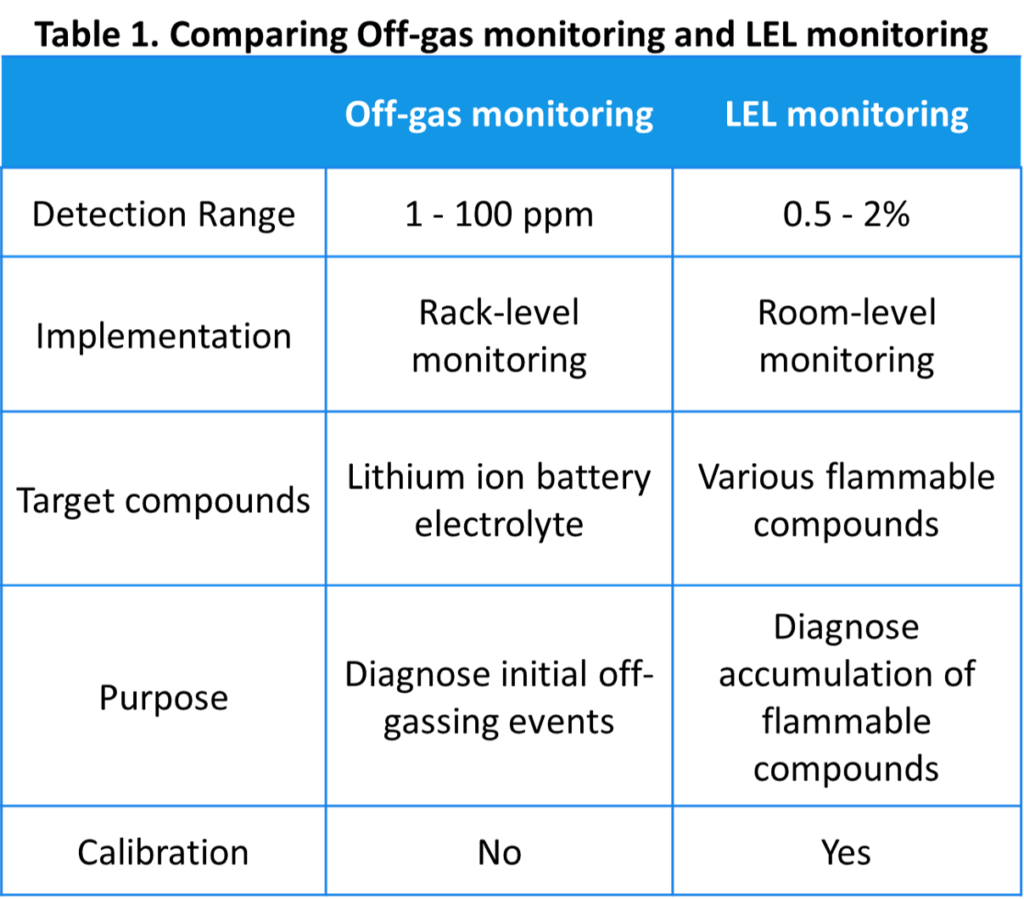
Li-ion Tamer delivers seamless integration into battery systems. For example, rack-level installations are painless because the easily-mountable and unobtrusive monitors can be installed in many locations. Solutions can be customized depending on the type of output is desired and can be catered to several different integration points.
The critical minutes gained by the off-gas monitor’s immediate response time provides early warning diagnoses. This information, whether it is fed to the battery management system (BMS), first responders, or both, creates the ability to make predictive actions instead of responsive actions. With this information, battery events can be mitigated and equipment and human life loss can be avoided.
Please reach out to us to obtain more information on lithium ion battery off-gas monitoring solutions.
While li-ion battery events are rare, they do happen. By recognizing this, we can take the necessary steps to improve our battery safety, handling, and usage, making the world a safer place. If you need help getting started, contact our lithium ion battery safety experts at info@liiontamer.com for a free battery safety consultation.
|
Let us help make your technology safer. |
|
|---|---|
|
Contact us for a free consultation with our battery experts and discover ways to improve the safety of lithium ion batteries in your specific application. |
|


